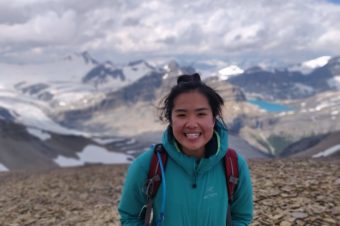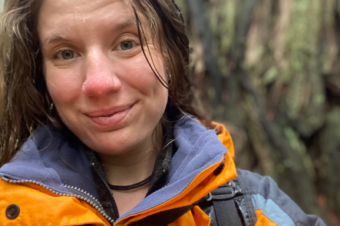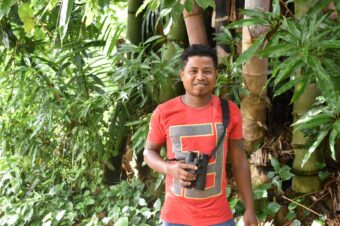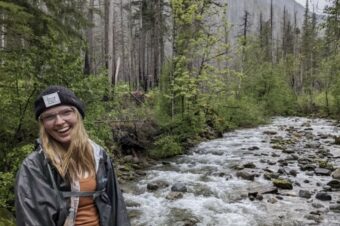Peter's Final Blog as MBP Volunteer
Today is my last day at KAFS. A sad moment as I put the finishing touches to my final blog for MBP. Tomorrow I begin my 10,000km journey northwards to Ireland with a twelve hour drive to Tana with Rico. Harilala is going home for Easter and will accompany us as far as the N7 just past Ranomafana.
The last three weeks since St Patrick’s Day have been very busy. It was a lovely surprise to see the Irish tricolour flying alongside the Malagasy flag at KAFS for St Patrick’s Day and to receive so many well wishes. It really made up up for missing the celebrations at home. Best of all was the delicious Irish style dinner the catering staff served at lunchtime.
That same afternoon I travelled to Fianarantsoa in a taxi-bus with Fredo and Harilala. Sitting in the front seat I had a lovely view of the countryside passing by as we climbed into the mountains. The scenery around Ranomafana is particularly beautiful, with the river tumbling dramatically over rapids and waterfalls and the hillsides covered with rainforest. Hopefully the hillsides around Kianjavato will look like this some day too.
I spent two nights in Fianarantsoa. On Friday night I had dinner with Fredo and his family in the Petit Bouf Hotel, and enjoyed a lovely cold bottle of beer for St Patrick’s Day. Next morning myself, Fredo and Fredino took a taxi-bus up the hill to the Cathedral and continued on foot as far as the view point on the hillside overlooking the city and to the mountains beyond. The sun was shining over the bustling city and dozens of butterflies flitted from flower to flower.

After being treated to a lovely lunch in his family home, myself and Fredo visited the grounds of the university followed by a walk through the public gardens, over the little hill past the Cathedral again and along The Avenue of Independence. Naturally our walk ended in a small cafe for a quiet beer.
Back at KAFS I continued to accompany the seed collection team three days a week. I love the opportunity to walk in the forests at Sangasanga and Vatovavy. The forest is never quiet. Frogs, insects and bird song constantly provide the forest soundtrack. Sometimes the surprisingly loud bellowing of black-and-white ruffed lemurs echoes around as it sounds like a bit of an argument is going on.
There is always something to see too. This week I saw a striated heron in the paddy fields below Sangasanga and shortly after that a large moth that was perfectly camouflaged as a dead leaf. If I hadn’t seen exactly where it landed when I disturbed it, I would never have found it. We came across the Varecia too, so it was lovely to see them one more time.
Last week, my penultimate week, the lemurs really put on a show. On Monday, on the way to collect mahanoro seed, we saw both red-fronted and black-and-white ruffed lemurs. On Tuesday I went for a walk with the lemur teams and was treated to my best encounters yet with giant bamboo lemurs and black-and-white ruffed lemurs.

The giant bamboo lemurs were right by the footbridge over the Fotobohitra River. We watched from about fifteen metres as a very small infant pestered a slightly older lemur. It danced around it, pulled its tail and seemed to be trying to prise its fingers from the branch. Every time the older lemur moved to a new place I watched it gather up its own long, grey tail and hug it as if trying to hide it from the youngster.
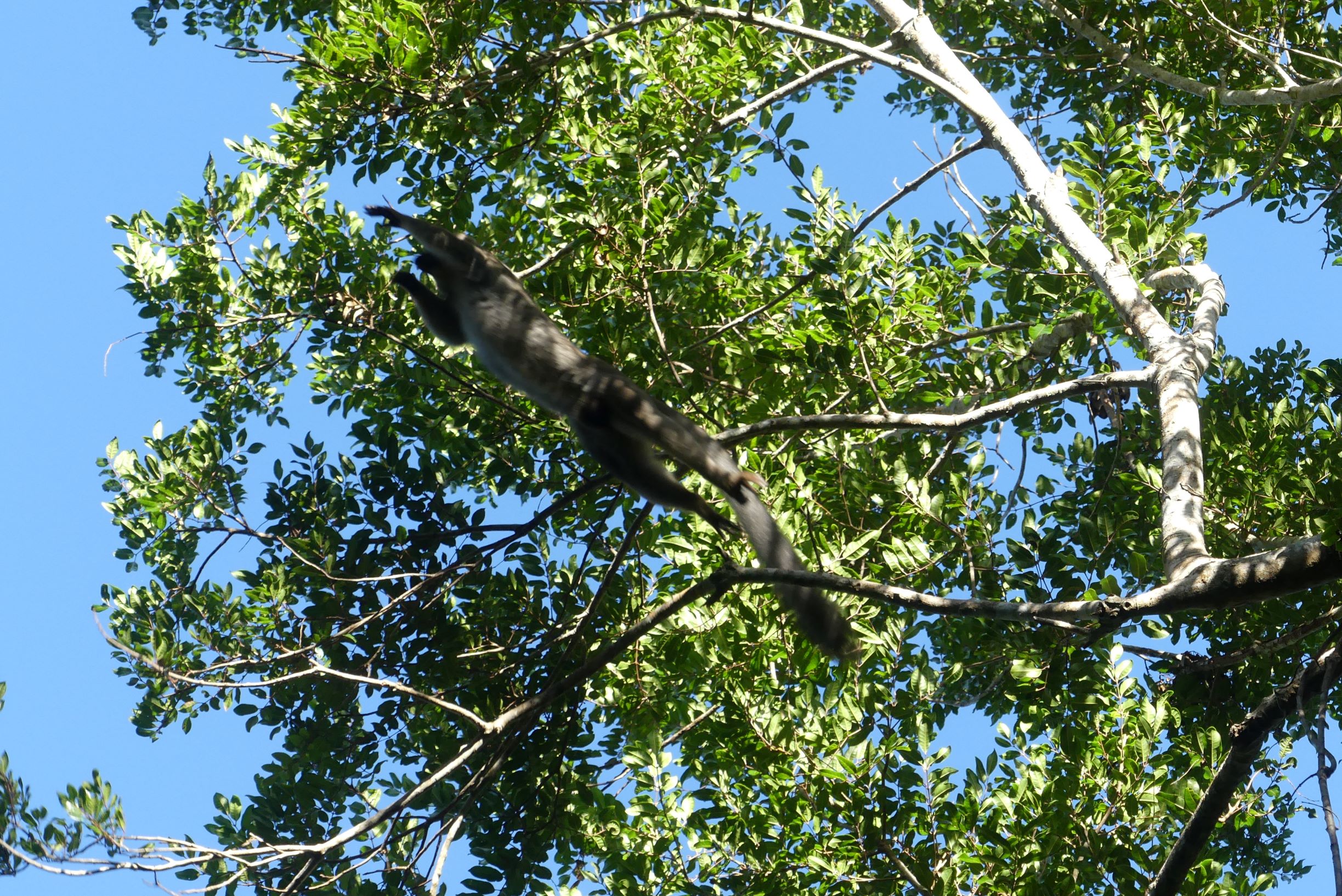

Higher up in the forest, near the top of the ridge. the team found the black-and-white ruffed lemurs in some ravenala palms. We were able to continue up the slope a little more so that we were level with the lemurs in their tree dining room. They took it in turns to eat the dry brown base of the fronds which form the characteristic shield of ravenala.
As we watched one tear a piece off and carry it to a branch before tucking into what must be like eating a dry, stale sandwich, Cressant told me no-one knows why they eat it.
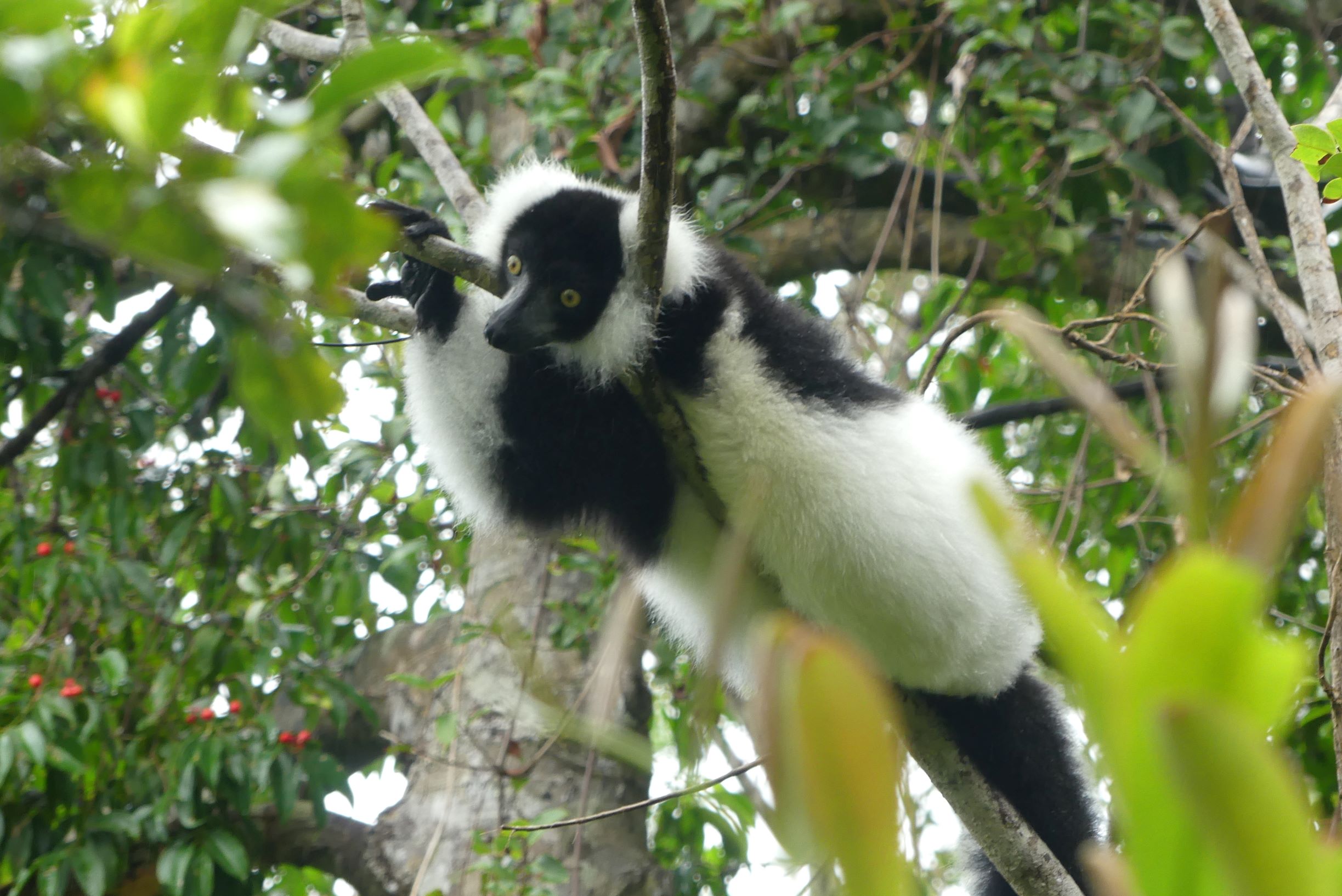
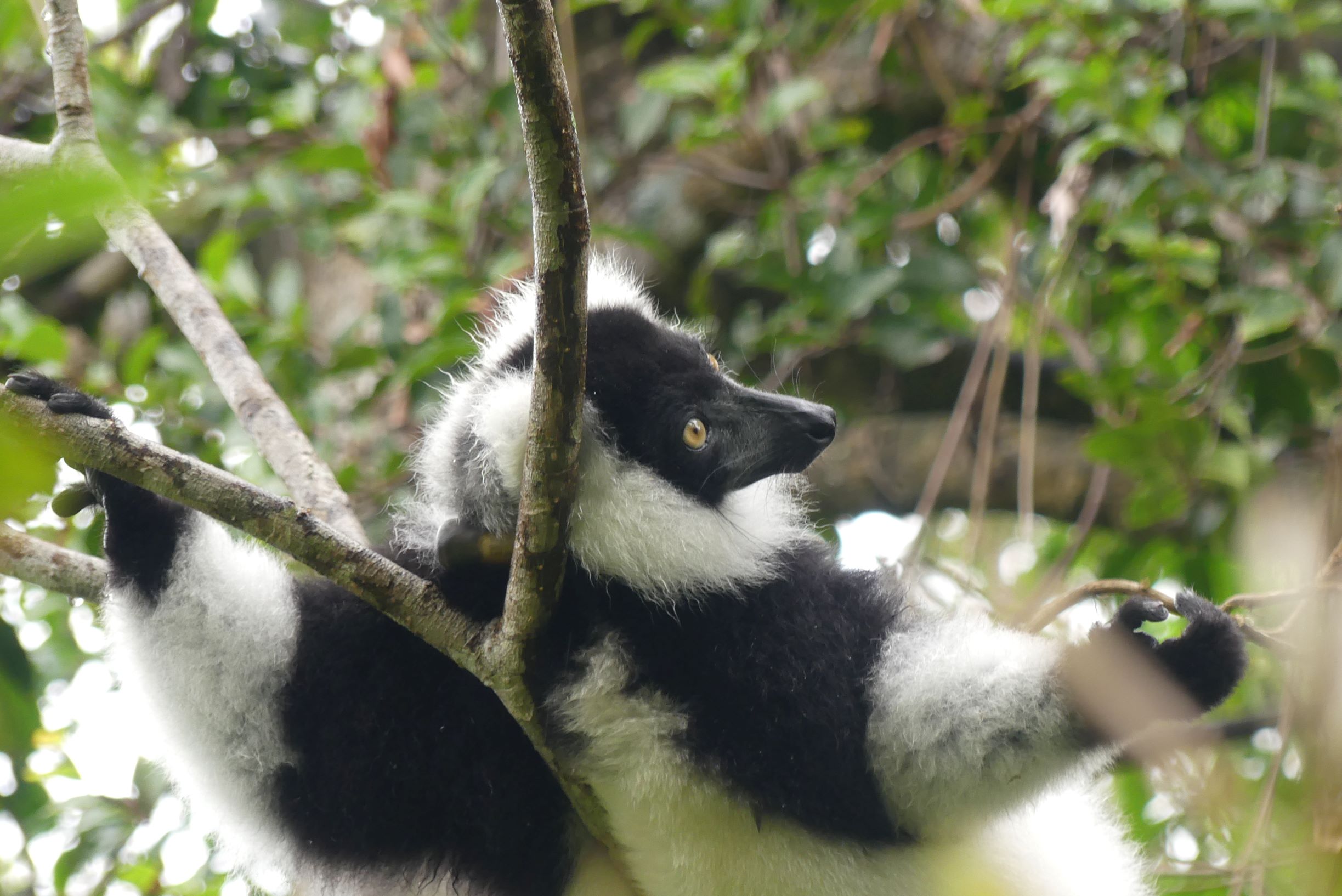
Finally, on Friday evening last I accompanied the Aye-aye monitoring team on a visit to Sangasanga. With Dada and Daga I climbed to the top of the ridge above the forest where we meet the rest of the team who were trying to pinpoint the Aye-aye’s location using a radio antenna. I could hear the faint ping on the receiver. After a quick discussion we set off towards the next ridge along the base of the rocky outcrop below the large cross which marks the summit of Sangasanga.
The path was overgrown and passage was difficult due to damage caused to the trees by three powerful cyclones in the space of twelve months. It was like swimming through tall vegetation, followed by tramping over brash of fallen branches and tree crowns and a little balancing act along a fallen ravenala trunk. It was hard work, but great fun for the twenty minutes or so it took us to arrive at the tree where the team reckoned the Aye-aye was still resting in its nest.
Just before 6.30pm I heard faint grunts as the animals stirred. A few minutes later I saw the orange glow of two little eyes peeping through the foliage and reflecting the light of my torch directly back at me. An Aye-aye! Daga called me a bit further around to the left and I could see a long black furry tail swinging side to side below a branch. A little later, around the other side of the tree, an Aye-aye emerged into view. It sat on a branch and used its legendary skinny fingers to groom itself. I was enthralled.

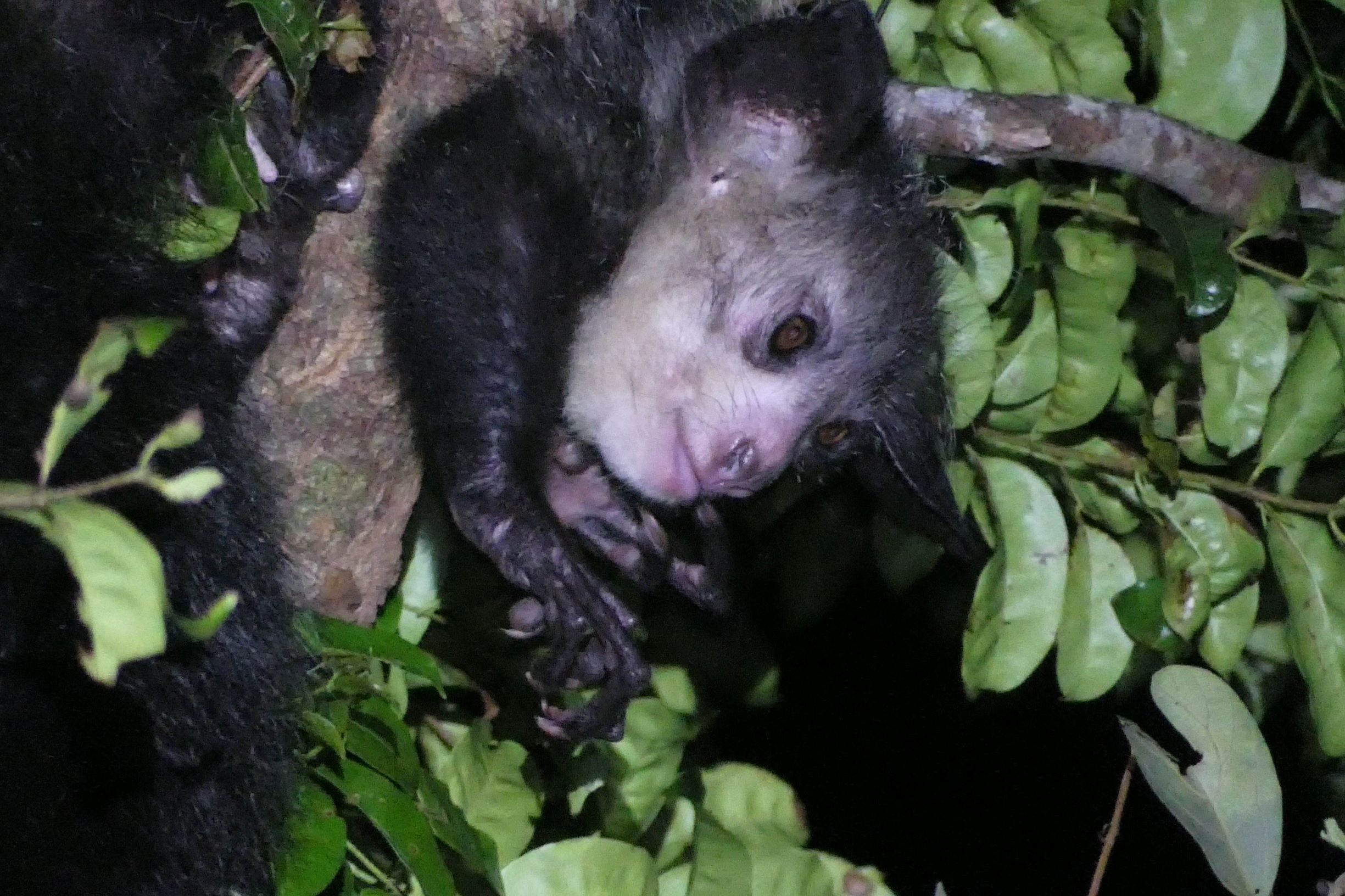
I could see why the Aye-aye inspires mixed feelings among some people. Its black body and white gremlin-like face and the famous skinny long nailed finger do make it look a little like a creature from a fantasy novel. However it is quite cute in its own way. After grooming it disappeared back into the foliage. The team completed their evening’s monitoring as I just enjoyed watching the aye-aye. We returned to Kianjavato along the pilgrim path which followed the ridge above us.
In this final week I started the process of trying to finish sorting what looks like a random collection of photos of seedlings, seeds and leaves, into some kind of order. I have really enjoyed working on the cataloging project. I am not a photographer, nor a botanist, nor a computer person, but I think my skills in all three areas have improved slightly. I hope that if nothing else I have provided some kind of baseline for someone else to work with.
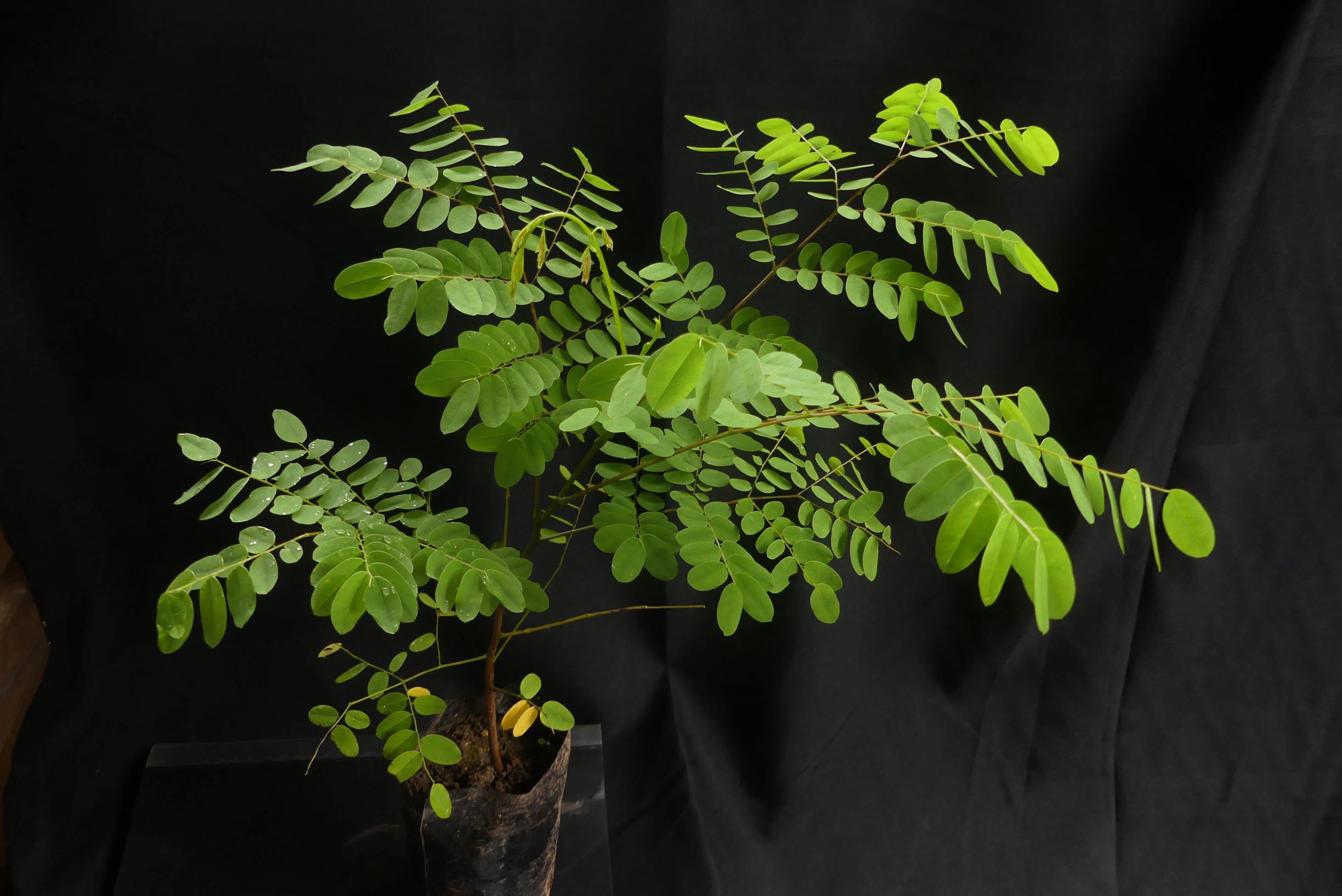
The Generic Tree Flora of Madagascar by George Schatz was recently added to the library here. Comparing vernacular names used by staff at KAFS and neighbouring nurseries against the names listed in Schatz has really helped me appreciate the enormous richness of the tree flora in Madagascar, both in terms of number of species and the culture as represented by such a variety of vernacular names.
Some of the vernacular names have entered into almost daily use for me, ramy, sandramy, mahanoro, bonarimena, bakoly, tsilaitra. In January they meant as much to me as they probably mean to many of you reading them now, unless of course you have been here. However with incredible patience, staff here helped me learn the more common and easier ones to identify. It was funny one day hearing someone recite my little ryhme for separating ramy and sandramy. Sandramy; long name, small leaf, small seed. Ramy; short name, big leaf, big seed. Again I hope I contributed something to the project, but I definitely got much more in return.
Of course the lemurs don’t care what we call the trees, so long as there are enough of the species they favour to provide suitable habitat. However, giving them names, taxonomy, is important for MBP in order to facilitate ongoing studies and recording the species mix used for reforestation.
I’ve always wanted to know more about botany, and my Madagascar experience has made me determined to learn much more about Irish species. According to the Tree Council of Ireland there are twenty eight native Irish tree species. Schatz states there are over 4,000 in Madagascar. However, like Madagascar, Ireland is very under-forested, only 11% of land forested, the lowest figure in Europe. We even have our own form of tavy slash and burn farming. Some landowners feel the need to burn the vegetation off their bogs to stimulate new growth. It is of course very damaging to wildlife and sometimes the fires rage out of control.
By getting into the habit of carrying my camera with me as much as possible, I really do look like a stereotypical tourist, I recently got photos of a spectacled tetraka and a Madagascar harrier hawk. Both right by Archeolemur tent site. I was particularly lucky with the spectacled tetraka as they are supposed to be very shy birds. It popped out of the bamboo just behind my tent site as I happened to be looking out with my camera in my hand. A special treat.
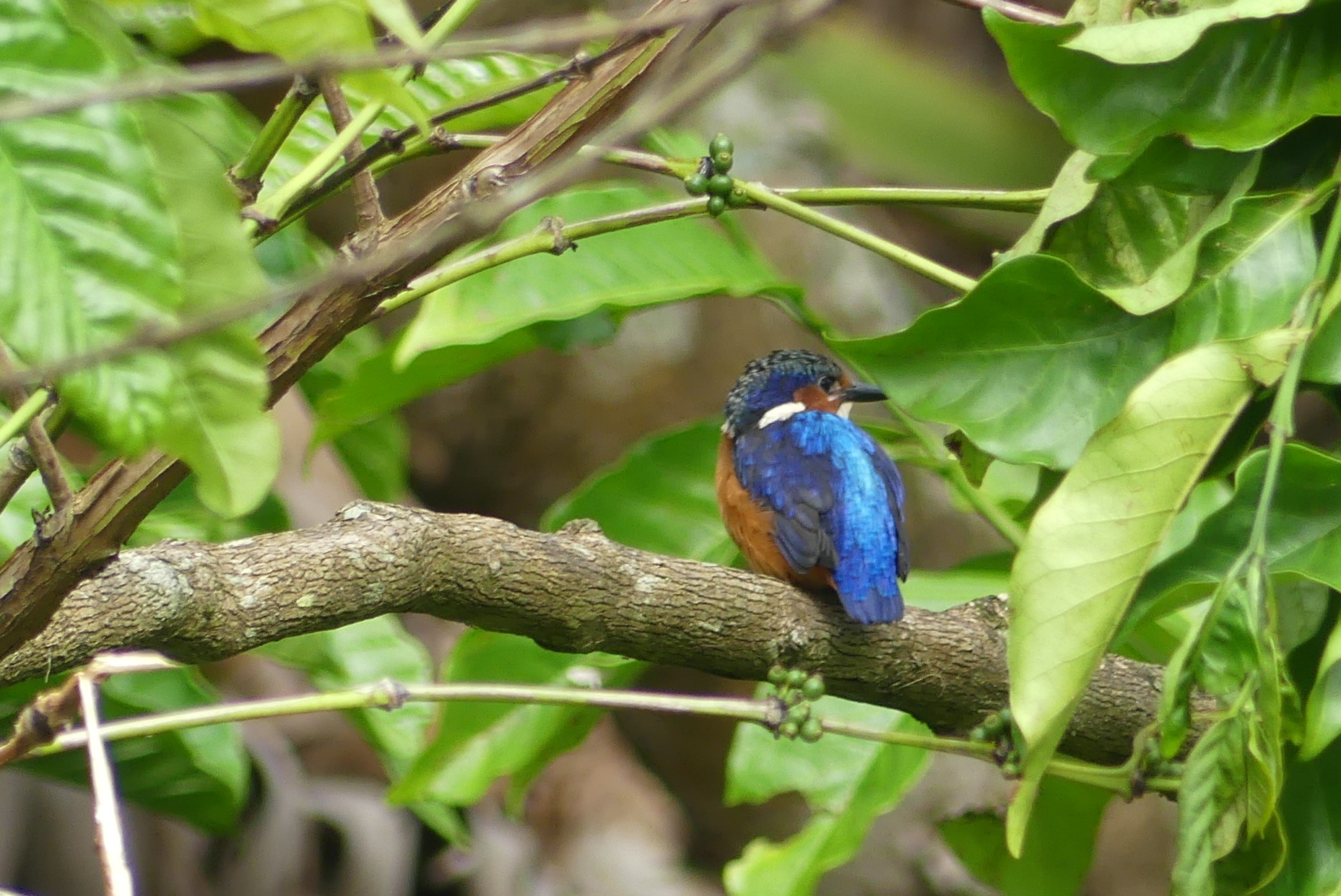
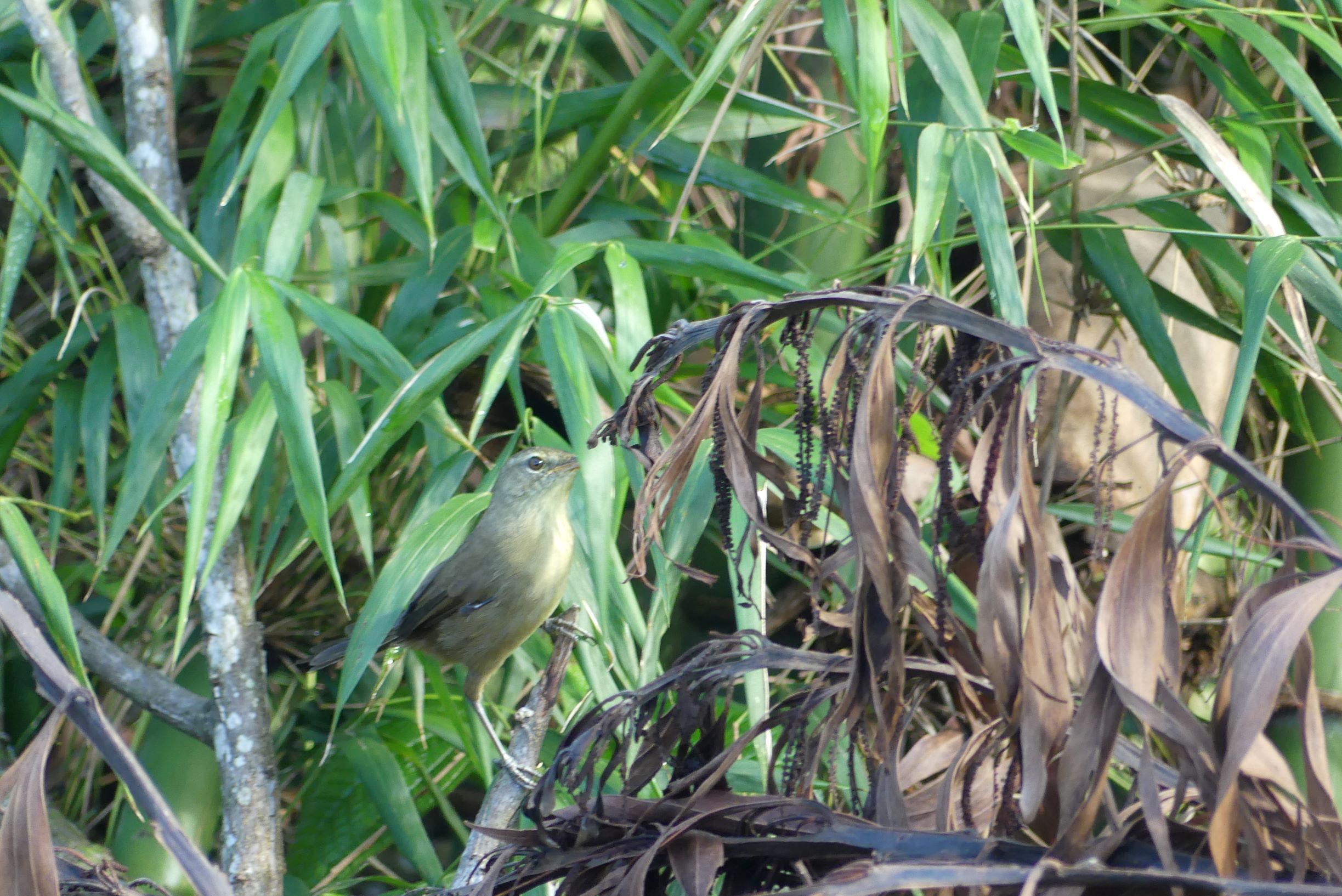
For my last day of seed collecting we went to Vatovavy to collect bonarimena. Sitting on a rocky outcrop under the tree canopy, picking little red tablet-like bonarimena seed from the crispy, curly, brown pods and dropping them into a small black plastic bag, I couldn’t help comparing this, my last day, to my first day way back in January. Then, I joined my new seed collecting colleagues to search for bonarimena seed along the NR25 just past the entrance to Vatovavy. A gentle introduction to seed collecting. Since then I have accompanied the team into many off-path corners of the forests looking for seed. I think it was very fitting that I finished by collecting bonarimena in the forest at Vatovavy which I had admired from the road that first day.
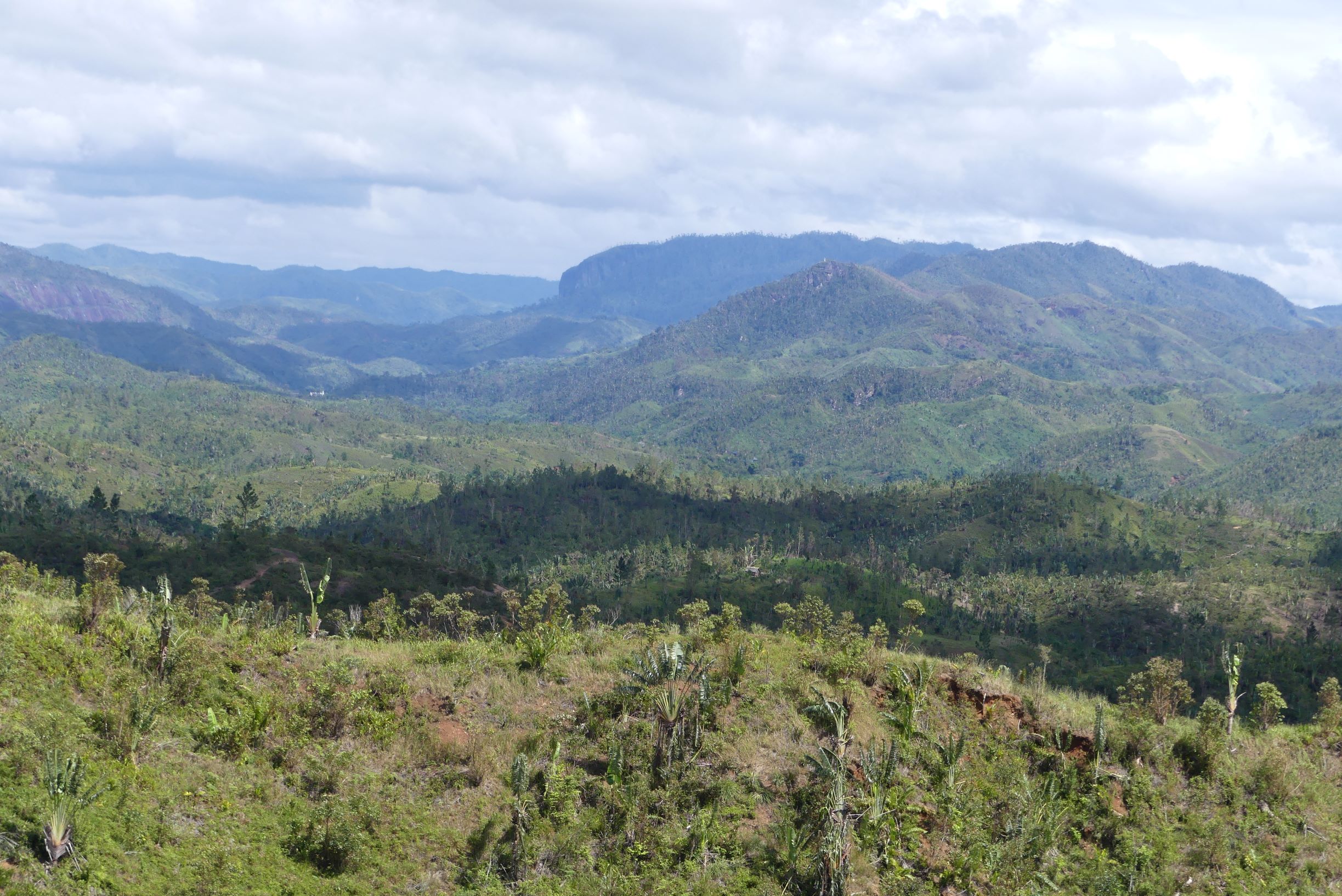
It goes without say, that I have really enjoyed my three months at KAFS. I’ll miss getting up at dawn and seeing the mist swirling around Vatovavy as the sun creeps over the horizon just to the left of it. And the soft churring of the nightjars which usually wakes me just before my alarm sounds. I’ll miss the walk to breakfast in the lovely cool air, followed by the buzz of the morning briefing as staff receive their assignments for the day. Searching the forest floor for seeds, which are far more valuable than gold, in my opinion, is a great way to experience the charm of the forests. I’ll miss the bubbling song of the drongo, the constant parade of colourful dragonflies and butterflies, and the dramatic evening thunderstorms as I go to bed. I’ll miss the good humour and patience of all the staff and the enthusiasm of those who attended the 2pm English classes, (apologies for leaving a bit of the Irish accent behind in KAFS). Most of all I’ll miss the constant possibility of seeing something new.
As I leave the KAFS house sparrows to return to the house sparrows in my own garden I wish to thank everyone at MBP and KAFS who have made me feel so welcome and a part of the team for the last three months. I am reluctant to mention anyone in particular as literally dozens of staff here have been so friendly and helpful. But I feel I do have to thank Fredo and Harilala for making KAFS a very pleasant place to be, and naturally I have to thank my colleagues in the seed collection team, Levazaha, Pita, Tadidy, ably lead by Monja. They taught me to recognise the seeds, trees and helped to find so much interesting wildlife. I have to thank the catering staff, Christine, Nadia, Fabrice and Rodin who kept me well fed, and the groundskeeper supervisor Frederic who always knew where to find anything that I might need. I also had the pleasure of meeting Dr Louis at KAFS.
I hope that MBP can keep up the good work or community engagement and reforestation for many years to come and I definitely intend to return someday.
Thank-you and cherrio.
Misaotra betsaka and Veloma.
Go raibh míle maith agaibh agus slán go foill.
